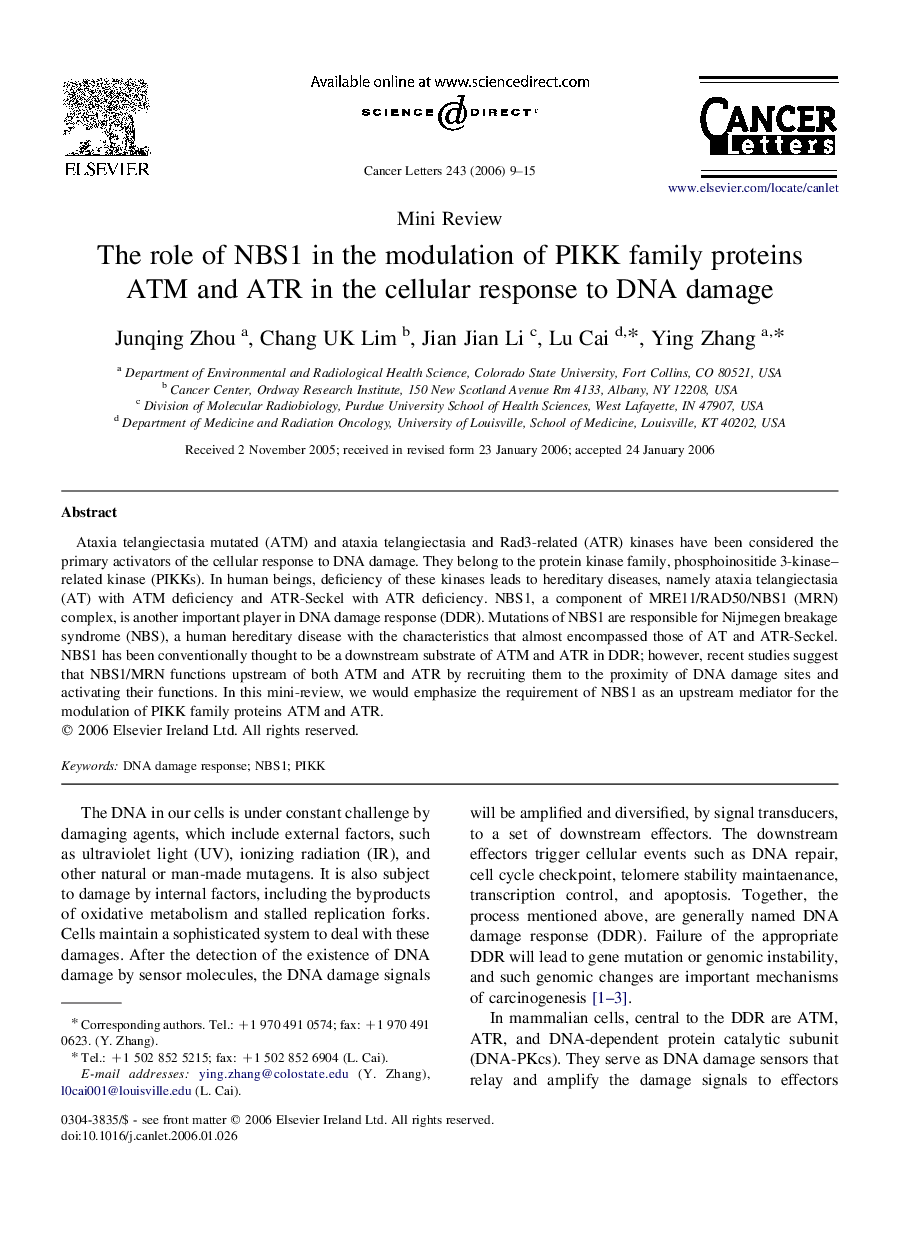| Article ID | Journal | Published Year | Pages | File Type |
|---|---|---|---|---|
| 2115491 | Cancer Letters | 2006 | 7 Pages |
Ataxia telangiectasia mutated (ATM) and ataxia telangiectasia and Rad3-related (ATR) kinases have been considered the primary activators of the cellular response to DNA damage. They belong to the protein kinase family, phosphoinositide 3-kinase–related kinase (PIKKs). In human beings, deficiency of these kinases leads to hereditary diseases, namely ataxia telangiectasia (AT) with ATM deficiency and ATR-Seckel with ATR deficiency. NBS1, a component of MRE11/RAD50/NBS1 (MRN) complex, is another important player in DNA damage response (DDR). Mutations of NBS1 are responsible for Nijmegen breakage syndrome (NBS), a human hereditary disease with the characteristics that almost encompassed those of AT and ATR-Seckel. NBS1 has been conventionally thought to be a downstream substrate of ATM and ATR in DDR; however, recent studies suggest that NBS1/MRN functions upstream of both ATM and ATR by recruiting them to the proximity of DNA damage sites and activating their functions. In this mini-review, we would emphasize the requirement of NBS1 as an upstream mediator for the modulation of PIKK family proteins ATM and ATR.
